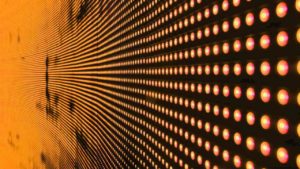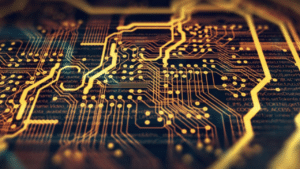A detailed examination of radiated field and transmitted power test techniques MICHEL LE CLECH, EMITECH ABSTRACT HIGH PULSED E-FIELD TEST LEVELS increased at the end of the 1990s. At the same time, many efforts were made to develop a very efficient test technique with the mode-stirred chamber. However, by improving the antenna design and test distances, comparable levels can … [Read more...]
Reflections on Absorbers
High frequency, broadband performance links recent improvements in EMI shielding components Jim May, Ferrishield, Inc., Scranton, PA, USA Just as the electronics industry has experienced exponential change over the past decades, EMI shielding components have undergone vast changes and improvements. Just ten years ago, many of today's widely-used gaskets, filters, ferrites, … [Read more...]
Input Power – It’s More Than Just a Line Cord
The power distribution and control function has matured into a full-fledged design discipline. Roger Edelson Edelson Associates, Los Angeles, CA, USA Power distribution and control (and the associated cable management function), while not a sexy topic, has grown into a recognizable, and important, subset of industrial equipment design. Power distribution and control … [Read more...]
Aspects of Conductive Filler Loading on EMI Shielding and DC Volume Resistivity
Brian W. Callen, B. Sc., Ph.D. and Claudia E. Johnston Westaim Ambeon, Fort Saskatchewan, Alberta, Canada Dennis K. Morland, P. Eng., M.Sc. The Northern Alberta Institute of Technology, Edmonton, Alberta, Canada INTRODUCTION Conductive fillers for plastics have been used in EMI shielding applications for many years. Initially pure metallic powders such as nickel or copper … [Read more...]
Antenna Polarization Measurements
Losses can arise from polarization mismatches. Ricardo Perez Alion Science and Technology, Annapolis, MD Antenna polarization is one of many parameters to consider when designing a system. The polarization of the transmitter antenna in a system should be properly aligned with the receiver antenna to maximize coupling. Maximum signal coupling between stations occurs when both … [Read more...]
Coping with Reflected Power in RF Immunity Systems
EMC system engineers face trade-offs when selecting high power amplifiers for RF immunity testing. During testing, the amplifier must withstand high levels of reflected power. An appreciation of how reflected power affects an amplifier is important if well-informed decisions are to be made. This article uses a simple thought experiment to de-mystify this complex phenomenon and … [Read more...]
Integrated Inductive Component Reduces Radiated Emissions in Power Applications
The geometry of magnetic components can affect the incidence of unwanted low frequency radiation in the magnetic field. Gabriel Arianes, David Castillo, Raquel Garcia and Oscar Perez; Ferroxcube, Guadalajara, Spain INTRODUCTION The miniaturization trend has resulted in smaller components and greater board densities in electronic applications. This very density, which … [Read more...]
Design Considerations for Minimizing Large Aperture Effects in Shielding
Large aperture arrays can present special shielding challenges Ron Brewer, Laird Technologies, Delaware Water Gap, PA Shielding can be used at the systems or PC board level to protect sensitive equipment or circuits from both internal and external RF sources. Large systems can be placed in shielded rooms or even shielded buildings. However, regardless of the size of the … [Read more...]
Photonic Bandgap Structures and Their Application to EMC Antennas
PBG structures have been explored as a way of reducing harmonics. Vincente Rodríguez-Pereyra, Ph.D., ETS-Lindgren The concept of photonic structures has recently been applied to the study of the microwave frequency (MW) range [1, 2]. Photonic bandgap (PBG) structures are analogous to a crystal lattice. It is known that in natural crystals there are certain non-occurring or … [Read more...]
Eliminating MYTHS about Printed Circuit Board Power/Ground Plane Decoupling
Bruce Archambeault, Ph. D. IBM Research Triangle Park, NC Barch@us.ibm.com Introduction The use of decoupling capacitors connected between the power and ground planes on a printed circuit board (PCB) is a common practice to help ensure proper functionality and to reduce EMI emissions from printed circuit boards. The proper number of decoupling capacitors, and … [Read more...]










